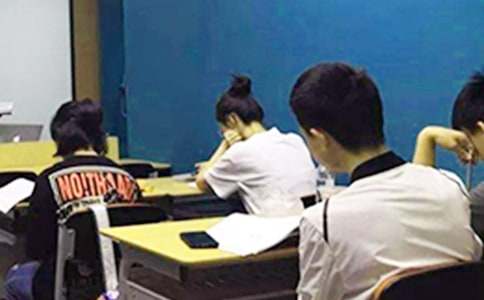托福考试阅读真题模拟练习
形成天才的决定因素应该是勤奋。以下是小编为大家搜索整理的托福考试阅读真题模拟练习,希望能给大家带来帮助!

PASSAGE 33
Researchers in the field of psychology have found that one of the best ways to make an important decision, such as choosing a university to attend or a business to invest in, involves the utilization of a decision worksheet. Psychologists who study optimization compare the actual decisions made by people to theoretical ideal decisions to see how similar they are. Proponents of the worksheet procedure believe that it will yield optimal, that is, the best decisions. Although there are several variations on the exact format that worksheets can take, they are all similar in their essential aspects. Worksheets require defining the problem in a clear and concise way and then listing all possible solutions to the problem. Next, the pertinent considerations that will be affected by each decision are listed, and the relative importance of each consideration or consequence is determined. Each consideration is assigned a numerical value to reflect its relative importance. A decision is mathematically calculated by adding these values together. The alternative with the highest number of points emerges as the best decision.
Since most important problems are multifaceted, there are several alternatives to choose from, each with unique advantages and disadvantages. One of the benefits of a pencil and paper decision-making procedure is that it permits people to deal with more variables than their minds can generally comprehend and remember. On the average, people can keep about seven ideas in their minds at once. A worksheet can be especially useful when the decision involves a large number of variables with complex relationships. A realistic example for many college students is the question "What will I do after graduation?" A graduate might seek a position that offers specialized training, pursue an advanced degree, or travel abroad for a year.
A decision-making worksheet begins with a succinct statement of the problem that will also help to narrow it. It is important to be clear about the distinction between long-range and immediate goals because long-range goals often involve a different decision than short-range ones. Focusing on long-range goals, a graduating student might revise the question above to "What will I do after graduation that will lead to successful career?"
1. What does the passage mainly discuss?
(A) A tool to assist in making complex decisions.
(B) A comparison of actual decisions and ideal decisions
(C) Research on how people make decisions
(D) Differences between long-range and short-range decision making
2. The word "essential" in line 7 is closest in meaning to
(A) introductory
(B) changeable
(C) beneficial
(D) fundamental
3. The word "pertinent" in line 9 is closest in meaning to
(A) relevant
(B) preceding
(C) insightful
(D) responsive
4. Of the following steps, which occurs before the others in making a decision worksheet?
(A) Listing the consequences of each solution
(B) Calculating a numerical summary of each solution
(C) Deciding which consequences are most important
(D) Writing down all possible solutions
5. According to decision-worksheet theory, an optimal decision is defined as one that
(A) has the fewest variables to consider
(B) uses the most decision worksheets
(C) has the most points assigned to it
(D) is agreed to by the greatest number of people
6. The author develops the discussion in paragraph 1 by means of
(A) describing a process
(B) classifying types of worksheets
(C) providing historical background
(D) explaining a theory
7. The author states that "On the average, people can keep about seven ideas in their minds at once (lines 17-18) to explain that
(A) most decisions involve seven steps
(B) human mental capacity has limitations
(C) some people have difficulty making minor as well as major decisions
(D) people can learn to keep more than seven ideas in their minds with practice
8. The word "succinct "in line 24 is closest in meaning to
(A) creative
(B) satisfactory
(C) personal
(D) concise
9. Which of the following terms is defined in the passage ?
(A) Proponents (line 5)
(B) Optimal (line 5)
(C) Variables (line 17)
(D) Long-range goals (line 25)
10. The word "it" in line 24 refers to
(A) worksheet
(B) problem
(C) distinction
(D) decision
11. The word "revise" in line 26 is closest in meaning to
(A) ask
(B) explain
(C) change
(D) predict
参考答案:ADADC ABDBB C
托福阅读技巧
1 前5套不计时做题,后面题都要严格按照20分钟一篇文章的限制来做题。
2 做题过程中不查词典。
3 做题后对照正确答案检查自己的答案。
4 检查自己错的题为什么错。不外乎如下几个原因:
1) 单词不认识或者认错了。
2) 语法点不懂。
3) 理解错了 做完之后要有针对性的,把这些问题解决掉。单词要背,语法点要去找单词书研究透。理解错的要比较后面给出的中文翻译,去思考自己哪个知识点学得不够扎实,因此弄错了,要把这个知识点解决掉。
5 正确的题也要去理顺一下这些题的'做题思路,方便以后快速的做题。
6 每做完4套题,就要把所有错的题横向比较一下,这是你马上就会发现某些题型经常错,这个时候只有把这个题型好好研究一下,以后做题才回来感。
7 如果每篇文章错的题的数目超过6个,则强烈建议多练习一下文章翻译,同时要比照后面给出的中文翻译来进行对照,分析自己哪里翻译错了,以及为什么翻译错了。
不这样做,你就根本不可能提高!做题简单,耗时短,但是分数几乎永远不会有提高;分析困难,耗时多,但是多则1-2个月,成绩就会有极为明显的提升。It’s up to you!
【托福考试阅读真题模拟练习】相关文章:
托福考试阅读历年真题练习11-01
2017托福考试阅读真题练习10-24
托福考试阅读真题08-12
雅思阅读真题练习10-27
托福考试真题练习201711-06
托福考试阅读历年真题11-02
历年托福考试阅读真题10-17
BEC阅读理解真题练习11-02
2017年托福考试真题练习11-04